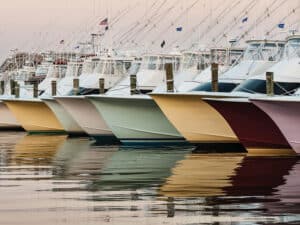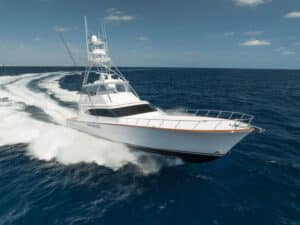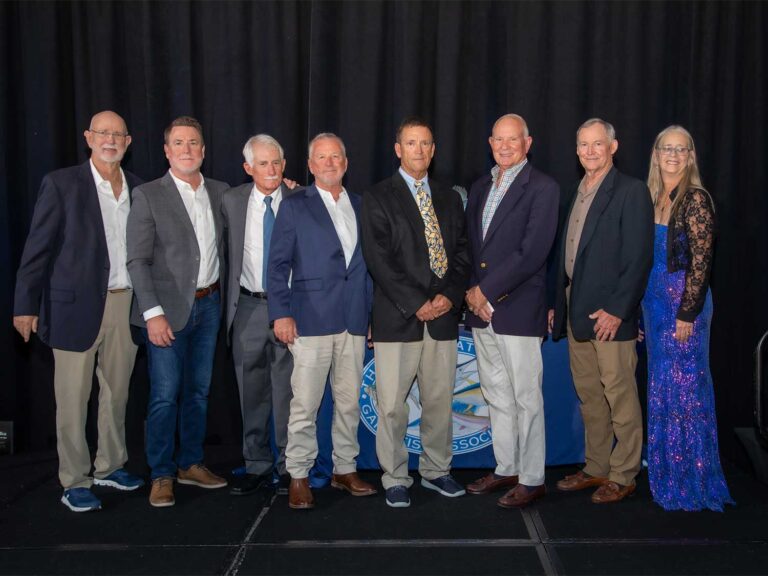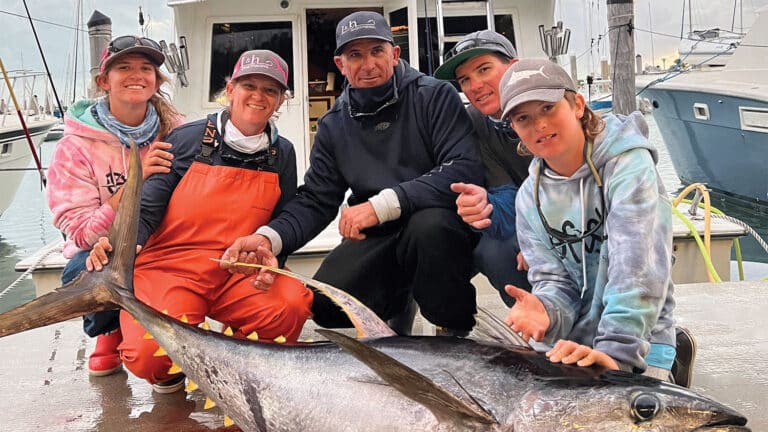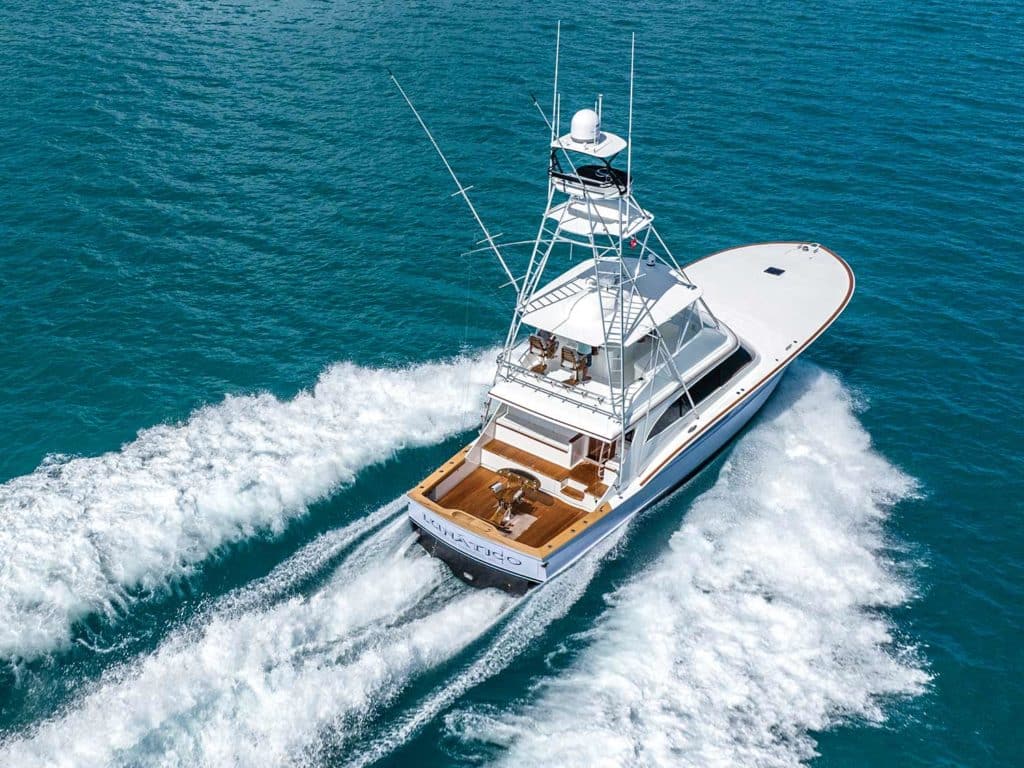
Special delivery: Sign up for the free Marlin email newsletter. Subscribe to Marlin magazine and get a year of highly collectible, keepsake editions – plus access to the digital edition and archives.
In this day and age, there is no shortage of amazing boats out there. Sportboats of all shapes, sizes, makes and models make their way around the globe to do just what they were built to do. Or do they? Not all boats were built to do the same thing, and just looking at one on the water doesn’t tell the whole story. Beneath that shiny paint and rich varnish hides years of planning, multiple drafts of drawings, hours of handiwork, and decades of knowledge and experience.
This beautiful exterior is also wrapped around dozens of challenges, compromises and tough decisions that ultimately result in a finished product that we all admire from afar. A product that will carry the name of the builder—the one who poured his heart and soul into its creation—for a lifetime, thankfully, for an owner who also committed a huge amount of time and resources. Add in a crew who is now tasked with keeping her in the Bristol condition necessary to represent the effort and expense that it took to create such a formidable weapon. Two years shrunk down into a few sentences hardly does this massive undertaking justice.
Watch: Take a ride on Wall Hanger, a waterjet-powered beauty from Spencer Yachts.
Visions
All new builds begin in a similar way. At some point, before a single board hits the shop floor, there is a meeting where ideas are laid out and the wish list is expressed. Many times, these brainstorming sessions go on for months, and in my opinion, they should, especially when the wants are very specific and are defining what the ultimate purpose of the boat will be. Meetings such as these will not only reveal but also define the owner’s and captain’s vision to befit the vessel’s length, speed, range, interior layout, and mechanical and electronic outfitting.
I have noticed on several occasions when talking to prospective new-boat builders that the length is the first thing to be determined. I then watch the builder’s wheels begin to spin as the list of wants grows large enough to fill an 80-footer, while the arbitrary length of 60-something feet is written at the top of the build report. Usually it’s right around this point where the real planning begins, and everyone who is involved with the project learns together what they are actually going to build. This decisive step is unavoidable, and will set the course for an open and honest conversation with regard to what is desired and what will be possible inside the parameters that have been established.
The best and most challenging part of putting together one of these amazing machines is combining three visions—those of the owner, the captain and the builder—into one to create a purpose-built sport-fishing weapon that is able to successfully perform the tasks for which it was created. The equipment must stack up, as must the electronics, fuel and water loads. Without those things meeting the moment, you may as well have thrown your time and money down the toilet. It’s like hiring a greenhorn and training him for months, only to have him freeze on the gaff just as your tournament winner gives up and lays on her side.
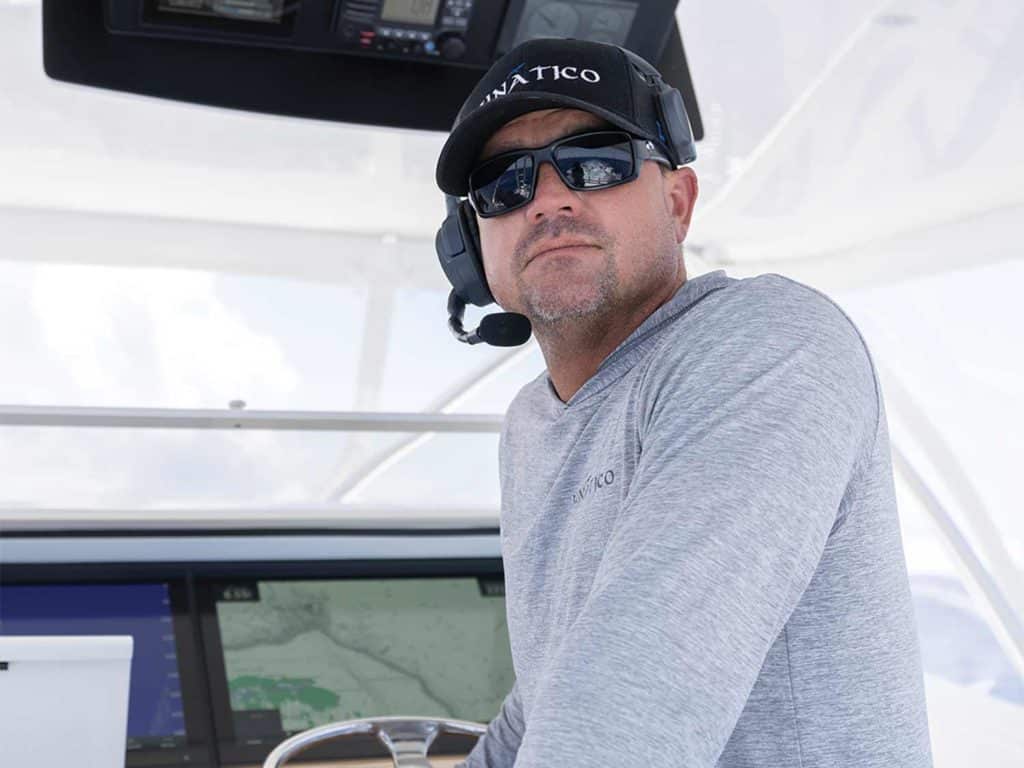
As the captain, I was lucky enough to be involved in such a project: the 63-foot Titan Custom Yachts Lunatico. She was commissioned by Lance Converse, whose plans included fishing in multiple big-game tournaments in several different locations. The plans required a tight timeline, traveling nearly 3,000 nautical miles, and we needed to be ready to fish soon after arriving at these destinations. That alone dictated our need for a boat that could carry a large amount of fuel and possess the redundant operating systems to ensure that we would be able to participate, even in the event of a necessary equipment failure. The ability to quickly switch to backup equipment was also a necessity, because a delay in transit when fair weather presents itself, or missing a tournament because of failure, are two things that we tried hard to avoid when designing this boat.
For example, our raw-water pumps for the air-conditioning and refrigeration systems are plumbed inline and can be switched to the back-up pump in seconds—same for the freshwater and fuel-transfer pumps. Maximizing all available space was also a priority. Eliminating dead space and turning it into usable storage helps us to carry all the necessary spares and tackle comfortably and cleanly throughout our eight-month season.
Every single piece of equipment that was installed was evaluated by the value it adds to the program versus the consequences resulting from its failure, and we chose to stay away from items that tied directly into the operational systems of the boat. For instance, we opted to go with an electric bow thruster as opposed to a hydraulic one. While the hydraulic thruster offers more power and much longer sustained use, it also requires a power take-off pump that ties into the transmissions. If that PTO pump develops a leaky seal, it could impair our ability to use the boat as desired. Decisions such as these were not plucked from thin air—they were born from experience, and this situation in particular happened to me before, causing a two-day delay while waiting for a new seal to arrive. Unacceptable for this program.
Keeping the propulsion equipment clear of any and all unnecessary clutter was also very important to us. Similar consideration was given to any electronics equipment that was not directly related to functional navigation of the vessel. For instance, I have had the keypad for our touchscreen navigation electronics become corrupted and cause one of our two units to fail, and it had to be replaced. Another lesson learned—and remembered.
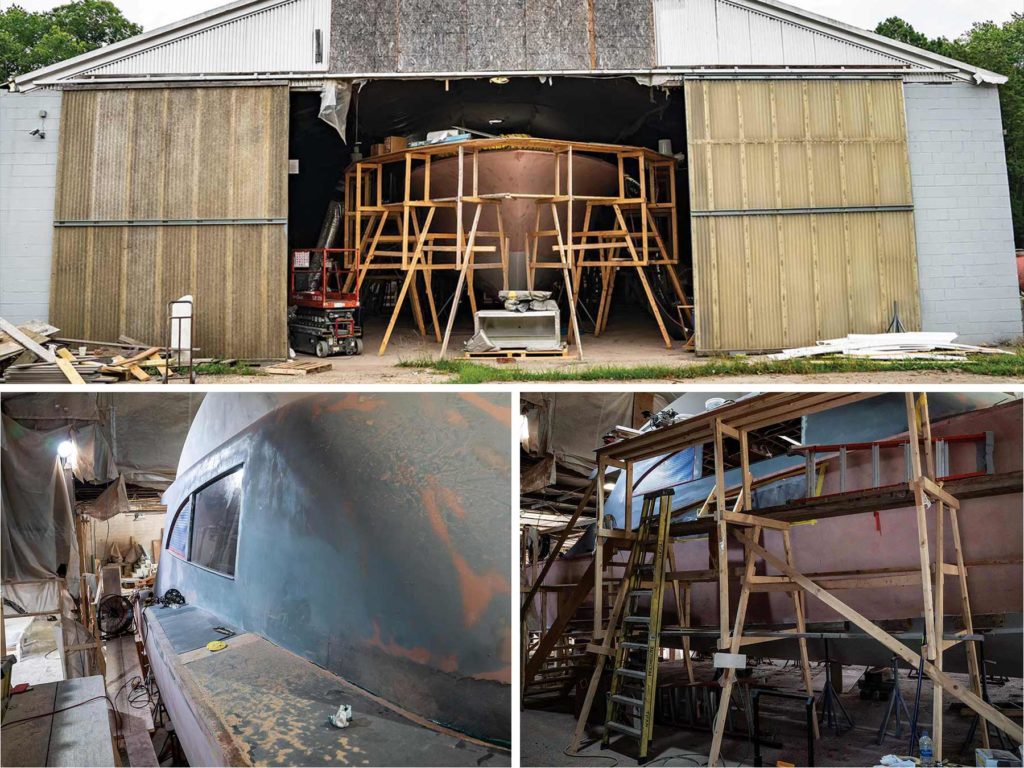
Fine-Tuning
Reconciling what is possible with what is desired is the most crucial step in the building process. Laying out what a customer wants will do a much better job of deciding the size of the boat than the number of feet he wants it to be. And oftentimes, the customer is surprised to hear how big the boat needs to be to house all of the equipment that is on the wish list. If all of this equipment is indeed essential to serve the purpose of the program, then the boat plans need to reflect that. If some of the items are irrelevant to the success of the specific program, then it is time to trim some fat. Being honest about the vessel’s purpose will do wonders for the build process, but make no mistake, compromises will have to be made, and this isn’t a bad thing. Good builders will adapt to the needs of the customer and find effective ways to trim one or two of the lavish items off the list to keep the project from growing out of control while still being in the owner’s comfort zone. Vessel integrity ensures that all of the proper systems are still in place.
Rather than a prospect build of 65 feet growing to 75 feet, the finished product could settle in at 68 feet and still possess all of the must-have items, albeit a few less arbitrary—and sometimes “unnecessary”—gadgets. All of these changes are easily made during the planning and pre-construction stages, and I would highly recommend spending plenty of time and giving lots of thought in this particular stage because such changes will become much more time-consuming and costly once the boat starts to take shape. Change orders, no matter how small, will not only cause delays in the delivery date, but also tend to cost much more after the fact, so doing your best to narrow down what is really needed and what is just wanted is paramount.
Learning Curve
All builders differ in the approach they take to designing the hull shape that bears his name. Every manufacturer has developed specific traits that form the foundation of the design from which they base all other manners of the build. Knowing the traits and tendencies of your prospective builder before the building process begins is key to avoiding attempts to reinvent the wheel. This is often a waste of time during the crucial months of the design process and can cause endless frustration to all parties involved, essentially turning a great experience into a bad one.
It’s a good idea to get to know your builder’s product well. Ride on one of his previous builds and meet with him directly to learn what his core beliefs are when it comes to construction and performance so that you know what to expect and can make sure your visions align from the start. For example: If you are using a builder who builds light, narrow, low-profile boats, then you might need to factor in a few more feet of length to achieve the end goal of housing all the necessary equipment and accommodations desired. Conversely, if your builder favors a heavier, wider, more voluminous build, then you might not be able to achieve the desired speed with relatively low-horsepower engines. Neither situation is a negative per se, but knowing your builder going into the project will only help you in the long run.
If you are in a boat now, invite the prospective builder to use your boat with you just as your new boat will be used. Take him tournament fishing for a few days so that he can observe exactly how your program operates, and in turn, he gets to know you by learning which equipment you favor, and the flow in regard to interior design and layout. Each program, while similar, is also vastly different, and it is very important for the builder to soak in your operation’s uniqueness. Three days on the water with a builder is worth three weeks of talking about it in the office. Good builders see things differently than the rest of us, and can recommend changes based on how they observe the boat being used and suggest ideas that perhaps we never would have thought of.
We invited the owner of Titan Custom Yachts, Russ Garufi, to fish with us during the Custom Shootout in the Bahamas; he came back to the States with a ton of ideas on how to make some changes that would better help our program succeed. Small, subtle changes, yes, but extremely easy to accomplish in the design phase, and every little bit helps.
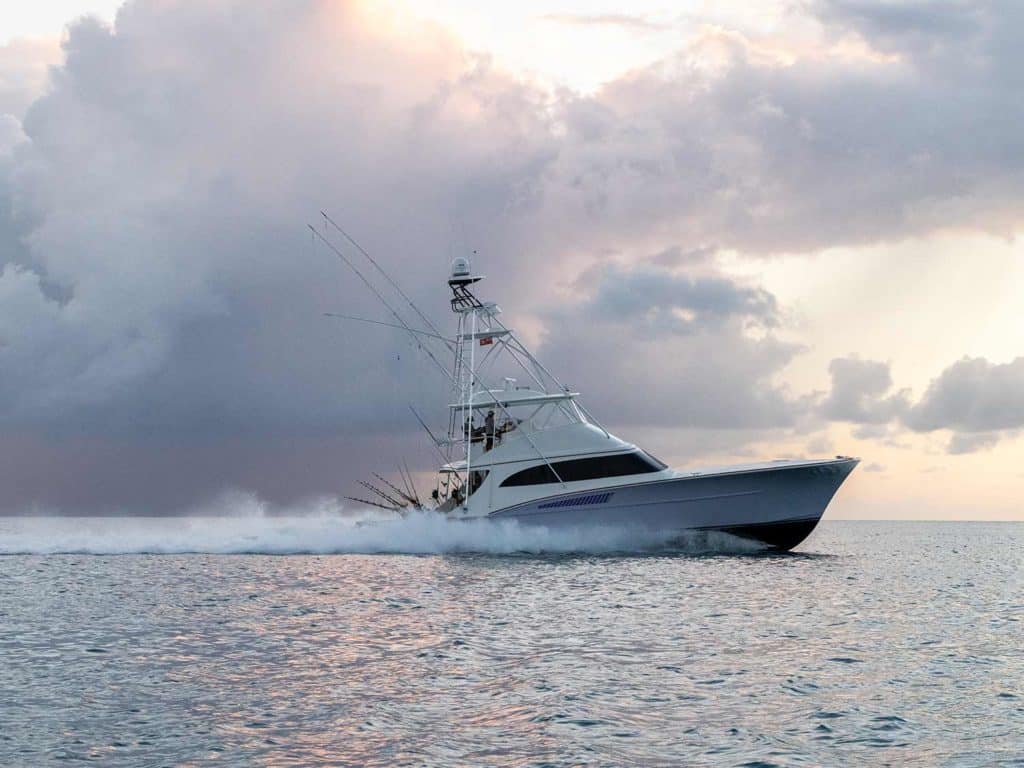
Be Involved
The personal relationship between the owner, captain and builder can make or break a build process. When challenges arise, or the supply chain slows down progress, a good relationship will allow the team to overcome those obstacles. It’s not just CAD drawings and spec sheets that go into a build. Real-world construction and assembly are happening, and often it doesn’t go exactly as planned on the mock-ups.
Sometimes a piece of equipment shows up with a “new and improved” cooling system or the “latest and greatest” connection fittings, which are completely different than the specs that were previously advertised when the equipment was ordered. This is where great boatbuilders show what they are capable of. They have seen it all before, and when issues like these come up, they just make it work and move on.
Written progress reports from the builder go a long way for a couple of reasons: They keep everyone informed, but more importantly, everything is in writing with a time-and-date stamp. That little piece of information on the email that says when it was sent can be just as important as what was sent, and when you are working with an investment worth millions of dollars, CYA is just part of doing boat business—or at least it should be.
Keeping the owner informed and up to speed is critical. Information being proactively presented is usually much better received than information that the owner has to chase down. A responsible captain eliminates poor communication that can turn a situation into a problem, or a problem into a disaster. When things go bad during a build, it is rarely the situation or problem that causes it to go off the rails—it’s the reaction to the situation or problem that does the real damage. Open and honest communication between the builder and the captain and the captain and the owner keep everyone on the up and up and out of the dark.
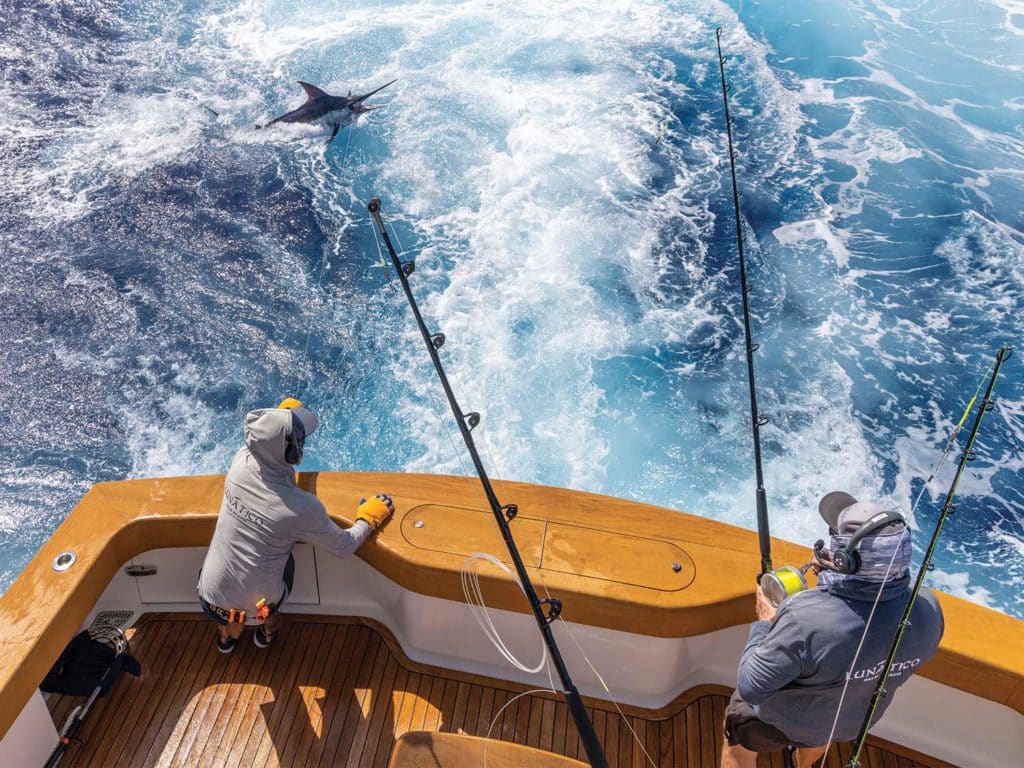
As Lunatico was nearing her delivery date, the supply-chain crisis was making some timely product deliveries difficult, but Garufi was great about keeping me informed, not only about the situation, but also what his backup plan would be should a particular supplier leave us hanging. This allowed me to keep the owner informed and show him that despite the challenges we were facing, we were all working as best we could to get his boat finished in time and be ready to fish his schedule. Garufi, being creative, flexible and proactive, was the key to navigating the quagmire of a post-COVID supply-chain crisis, and if it weren’t for his ingenious planning and constant communiqué, we might have had to sweat it out for yet another Maryland summer, having missed our 2022 marlin season altogether.
Read Next: Learn more about the past, present and future of the Offshore World Championship.
For all intents and purposes, this article is really just a small example of how you can—and should—approach your new build. Meet with the builder to clearly lay out your program’s needs and wishes, without introducing every latest and greatest new thing in order to keep yourself on time and on budget; get to know the builder, and let him get to know you; stay in constant communication, and cover your backside at every turn; and always have a backup plan when it comes to the undeliverables that could delay the transfer of ownership.
Today’s boatbuilders are professional and accomplished. They’ve seen the good and the bad during their tenure in this industry, and they have a vested interest in creating a weapon for you that not only serves its intended purpose outright, but that also will carry his lineage for its lifetime. He is proud of the finished product, just as you will be. So, if you can find a builder who aligns with your values and expectations, you’ll find a builder who will do everything possible to deliver the boat of your dreams—and then some.


